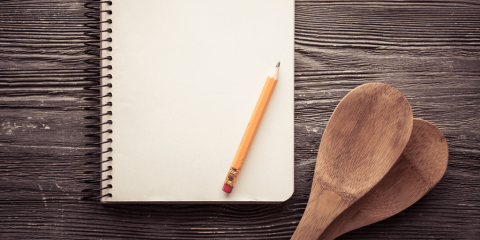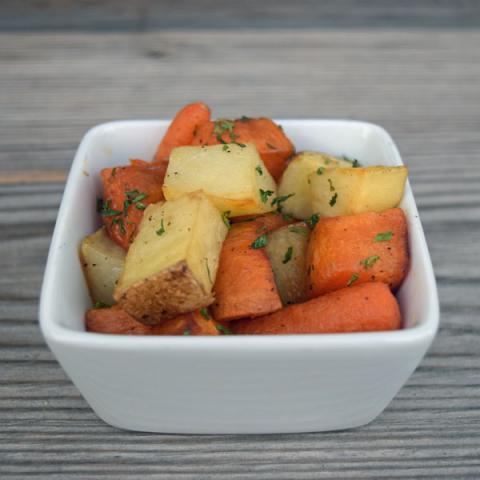
Gathering round the table for a special meal with family and friends can be a source of joy and feed both body and soul. Cooking late into the night before your meal, however, can greatly diminish the pleasures of the table. Cooking too far ahead can decrease the quality and safety of your food.
Here are some tips to put the focus back on family and friends rather than frenzied (and possibly unsafe) food preparation.
- Limit the number of foods you serve, so you have less to prepare. For example, do you need two (or more) desserts? Remember: desserts spelled backwards is S-T-R-E-S-S-E-D.
- When to start? Unless food will be frozen, it's safest and will provide the best quality product to start preparing most perishable foods no more than a day before a meal. For example, assemble a vegetable casserole a day in advance, refrigerate and then bake the day of your dinner. Plan 15 to 20 minutes additional heating time for the refrigerated cold casserole. Heat until it's hot and steamy throughout (165 °F as measured by a food thermometer).
- Careful with fruits and vegetables. Cut washed fruits and vegetables within a day of your meal for salads and relish trays. Store all CUT fruits and vegetables in the refrigerator. Avoid leaving cut and/or peeled fruit and vegetables at room temperature for more than two hours. Keep cut fruits, such as apples, pears, bananas and peaches, from turning brown by coating them with an acidic juice such as lemon, orange or pineapple juice. Or use a commercial anti-darkening preparation with fruits.
- Baked goods: Non-perishable foods such as cakes and cookies can be prepared a few days in advance and still will taste good. Or, they can be frozen for longer storage. Cream or custard pies such as pumpkin, must be kept in the refrigerator at 40 °F or cooler.
- Special tips for handling meat, poultry or seafood. As a general rule-of-thumb, purchase these foods no more than 1 to 2 days before your meal. Freeze for longer storage. These foods may taste freshest if cooked the day of your meal. If you have frozen your meat, poultry or seafood, plan time for safe thawing in your refrigerator. Allow approximately 24 hours for each 5 pounds of weight.
- Cooking meat or poultry the day before: If you prepare meat or poultry the day before your meal, divide it into small portions after cooking. Then refrigerate in loosely covered shallow containers within 2 hours of cooking — limit depth of the food to about 2 inches. Place loosely covered foods in the refrigerator while still warm and cover tightly when food is completely cooled. On the day of your meal, cover the meat with foil and reheat in a 325 - 350 °F oven to an internal temperature of 165 °F until steaming hot throughout. Add a bit of broth, water or gravy to help keep meat moist. Learn more about How to Cook a Turkey the Day Before Serving It
- Peel potatoes the day before cooking. While some nutrients are lost if potatoes are peeled in advance, this is a time-saving step when you have little time to prepare a special meal. The Idaho Potato Commission suggests to peel the potatoes and cut into even sized chunks. Adding some acidity to the chilled water such as a teaspoon of white wine vinegar or concentrated lemon juice will help keep the potatoes from oxidizing and turning gray. Cover and refrigerate the potatoes until ready to cook.
- Save time by setting your table the day before your meal. Also, set out all food preparation and service utensils. Or, assign children or others to set the table before you eat.
Sources:
Fruit and Vegetable Safety, Centers for Disease Control and Prevention (CDC)
How Temperatures Affect Food, Food Safety and Inspection Service, United States Department of Agriculture
Serving Up Safe Buffets, Food and Drug Administration (FDA)
This article was originally written by Alice Henneman. It was reviewed and updated in 2023.
Feedback Form
Feedback Form
If you do not see the article, please scroll up the page.







